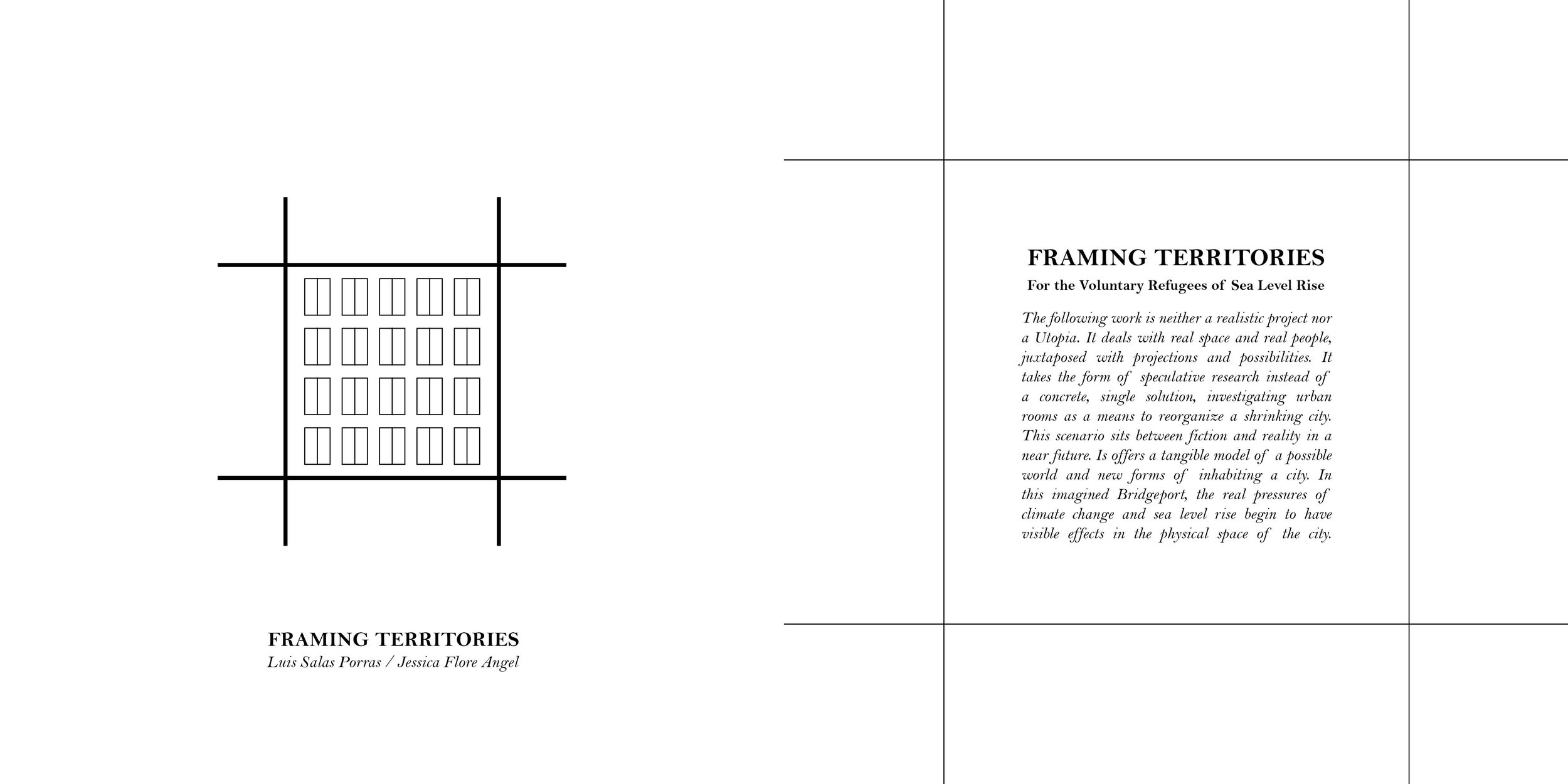
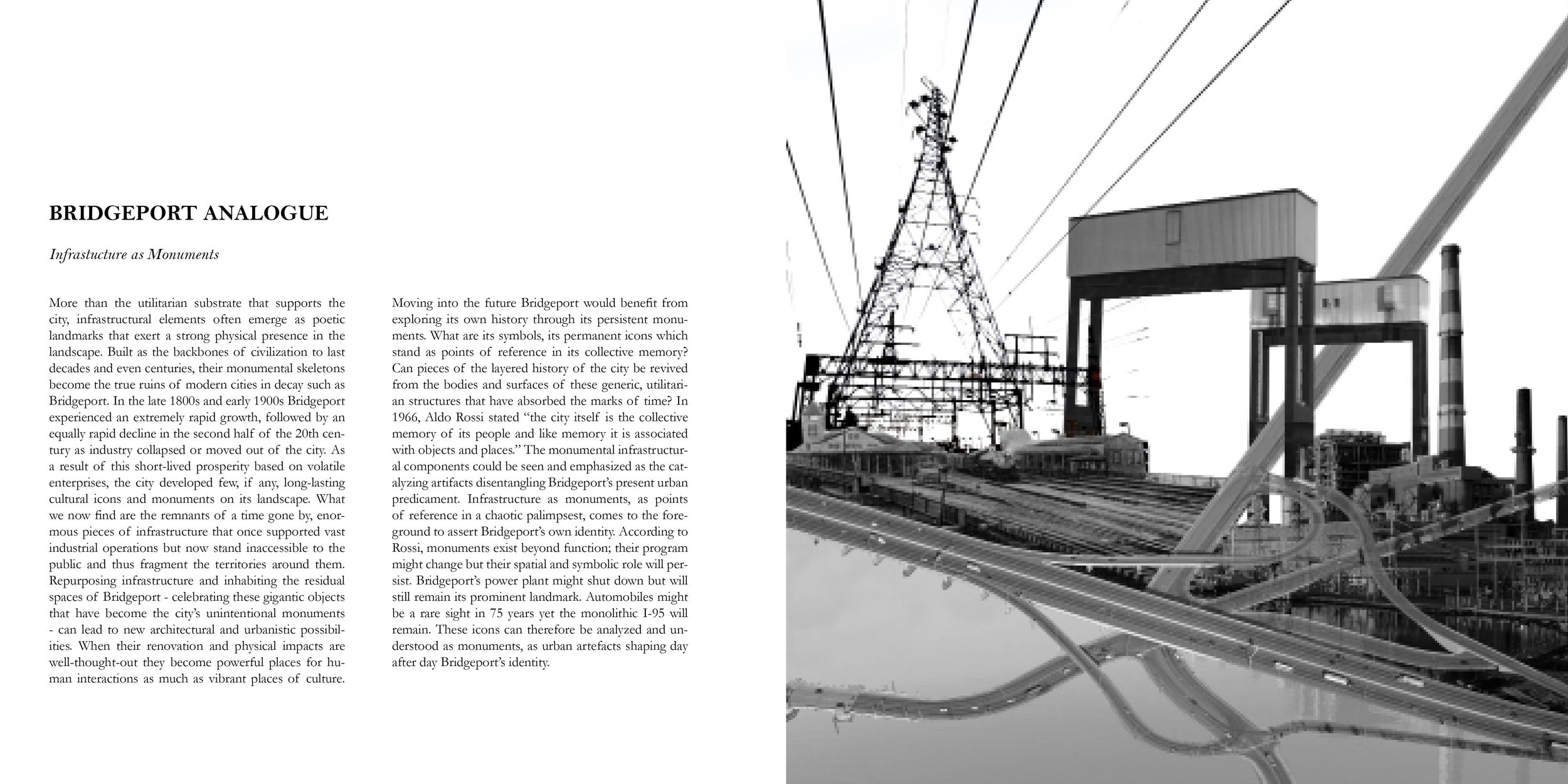
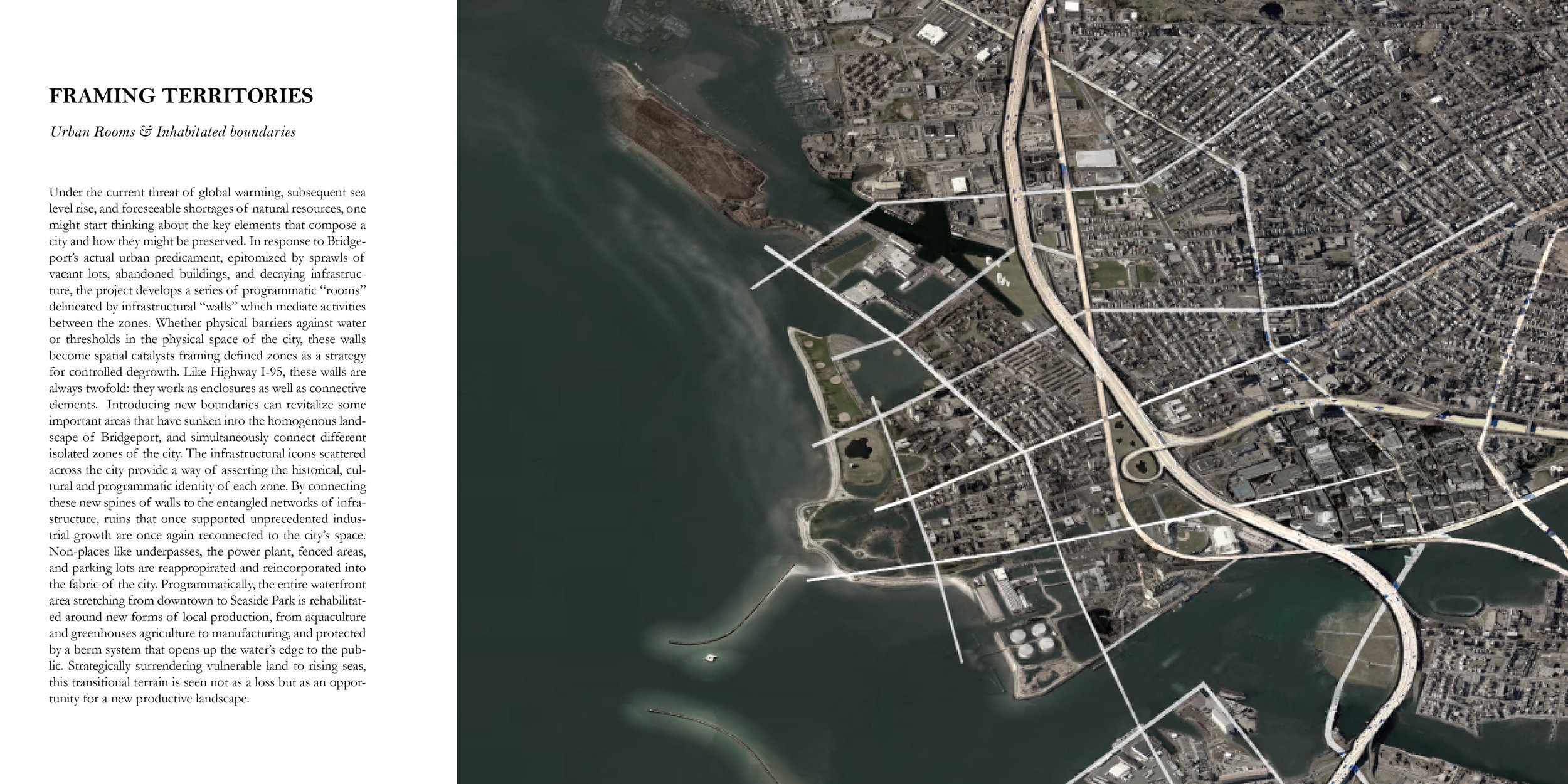
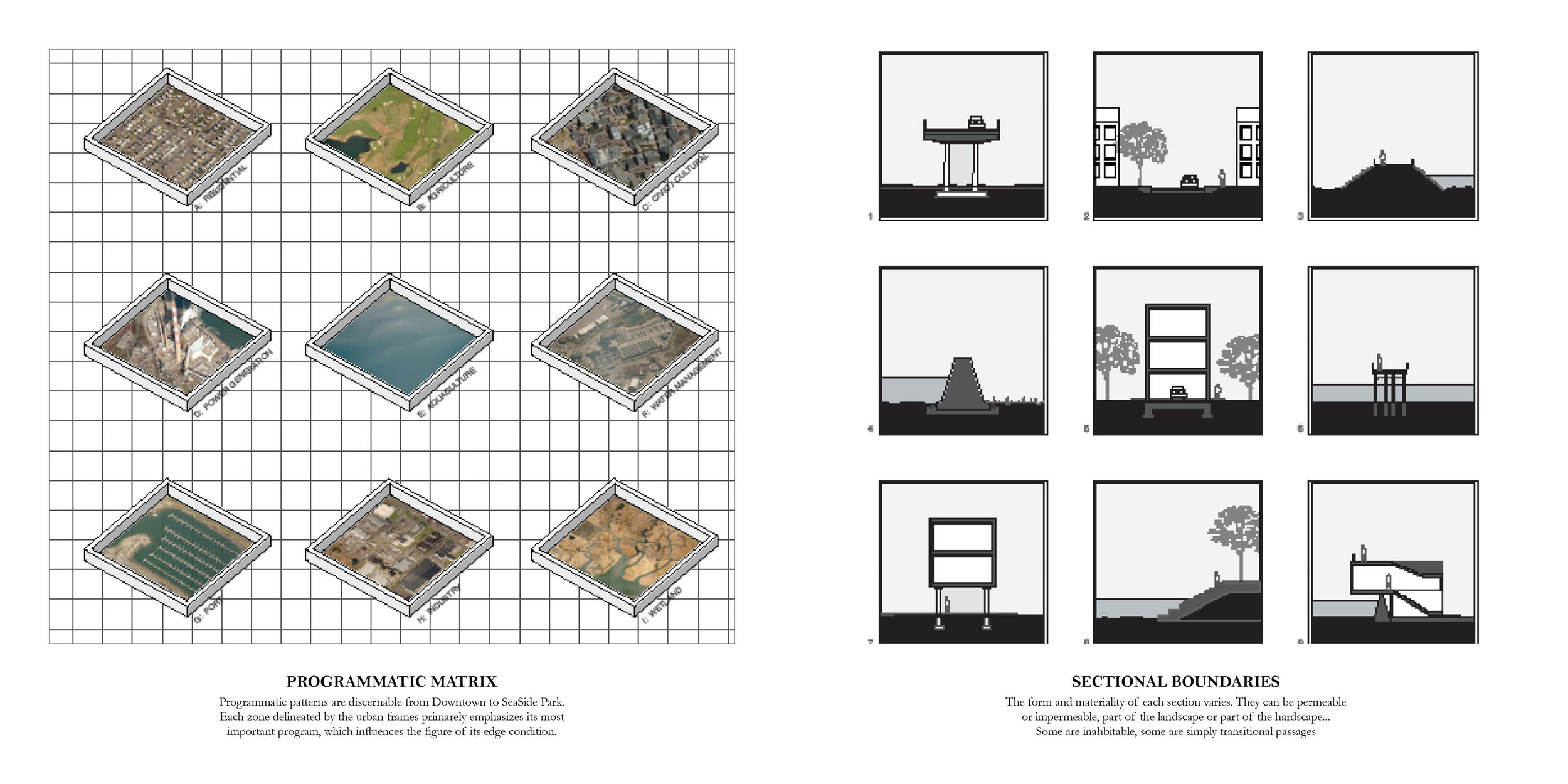
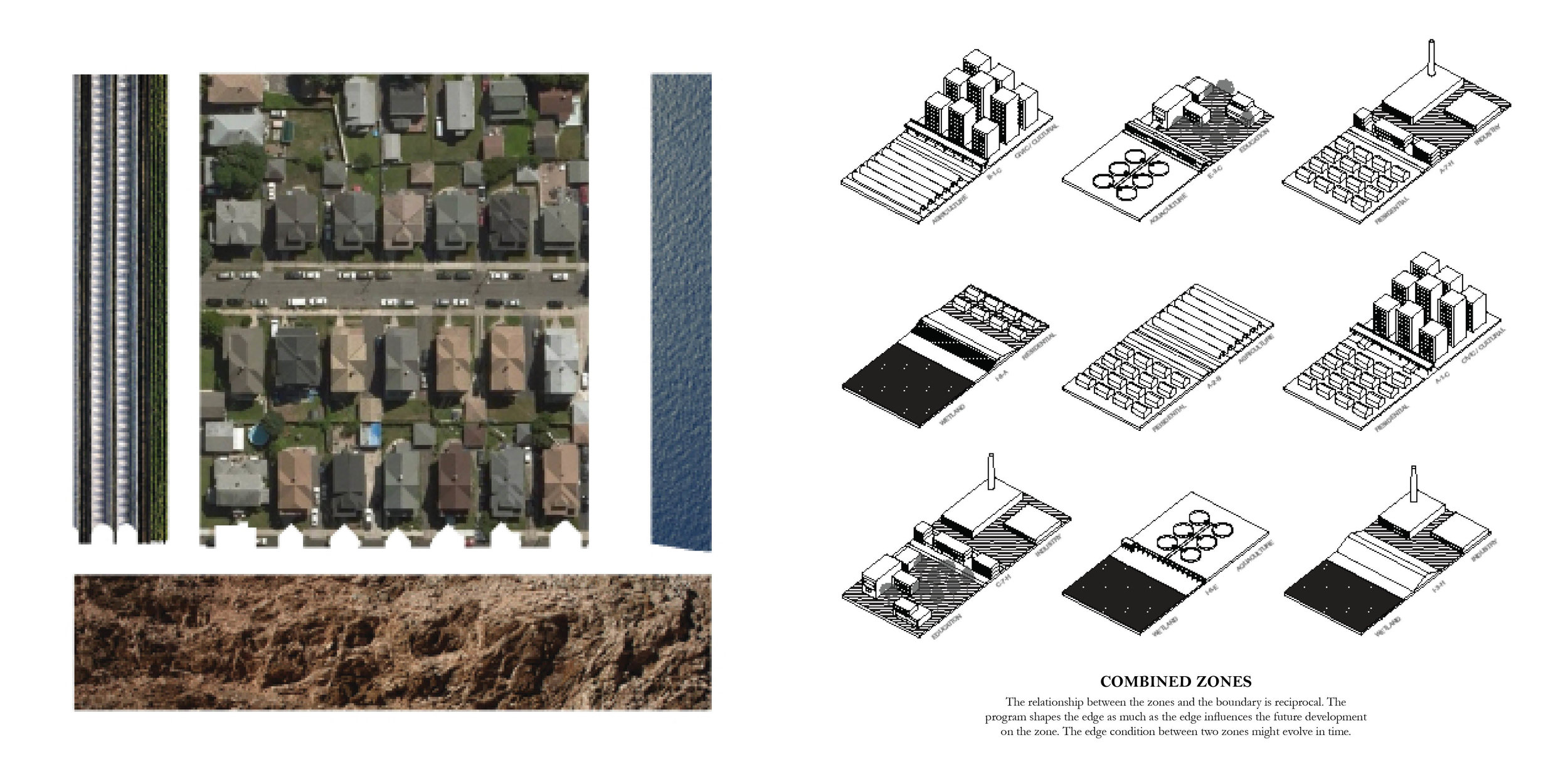
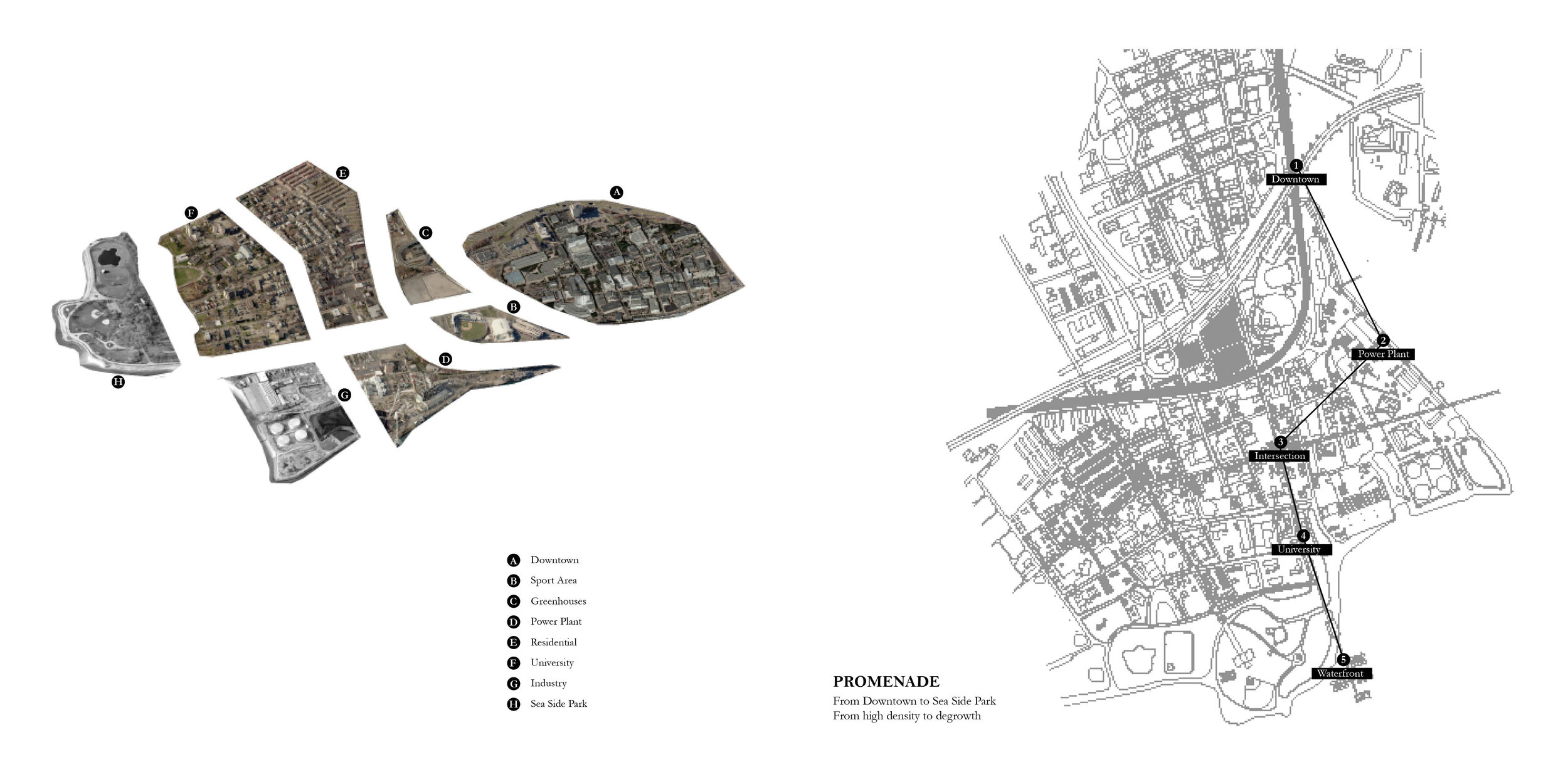
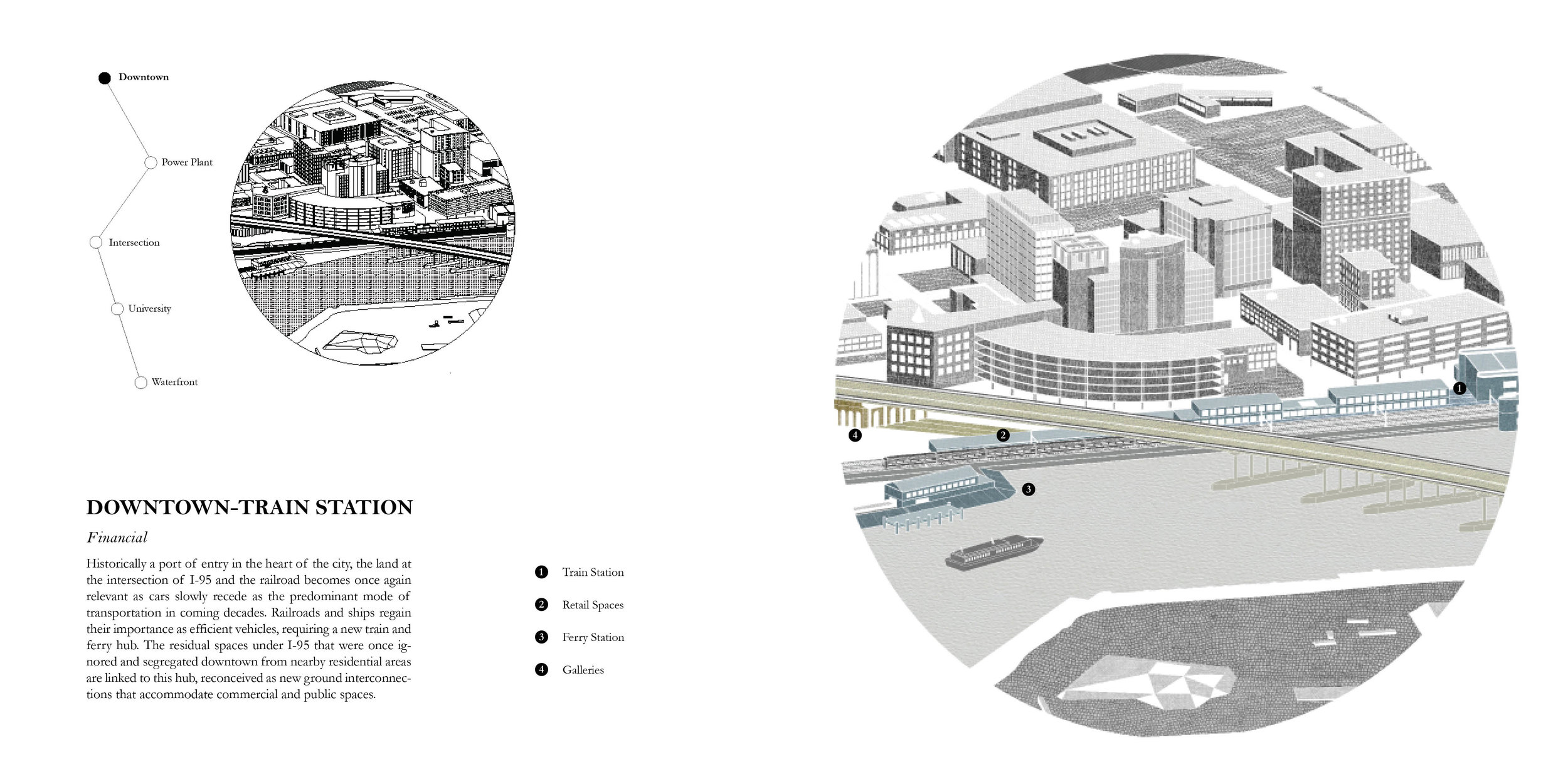
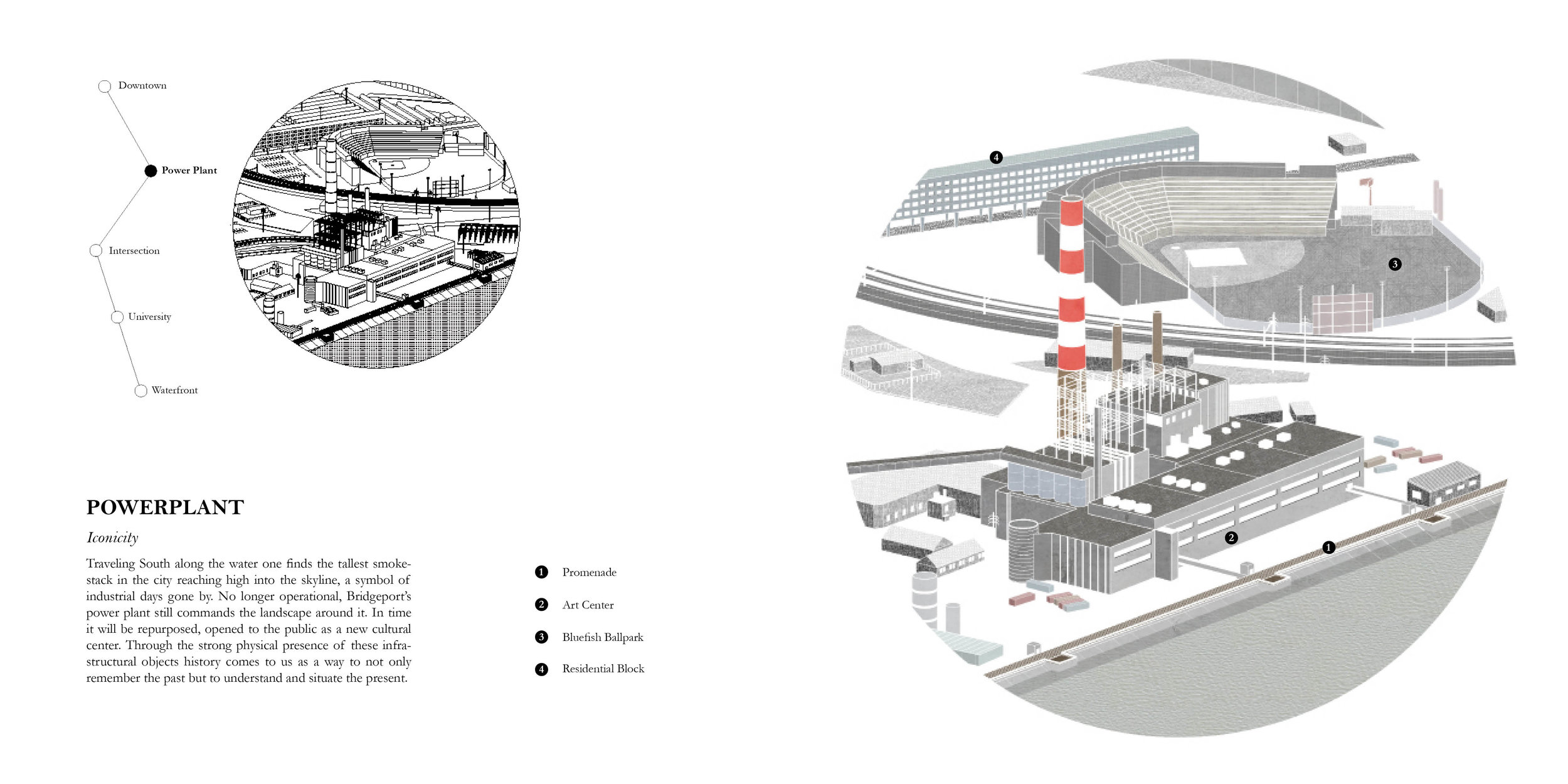
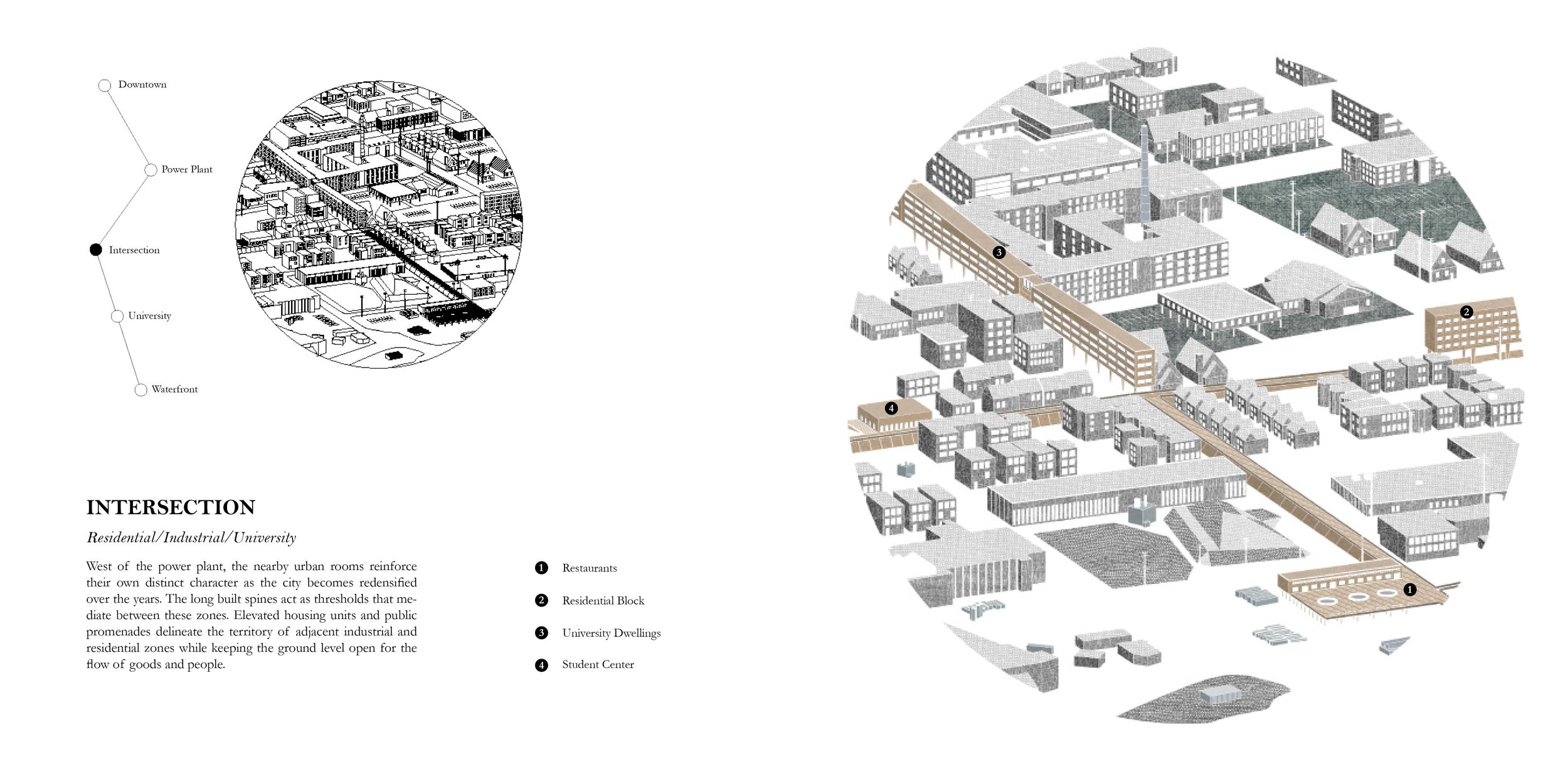
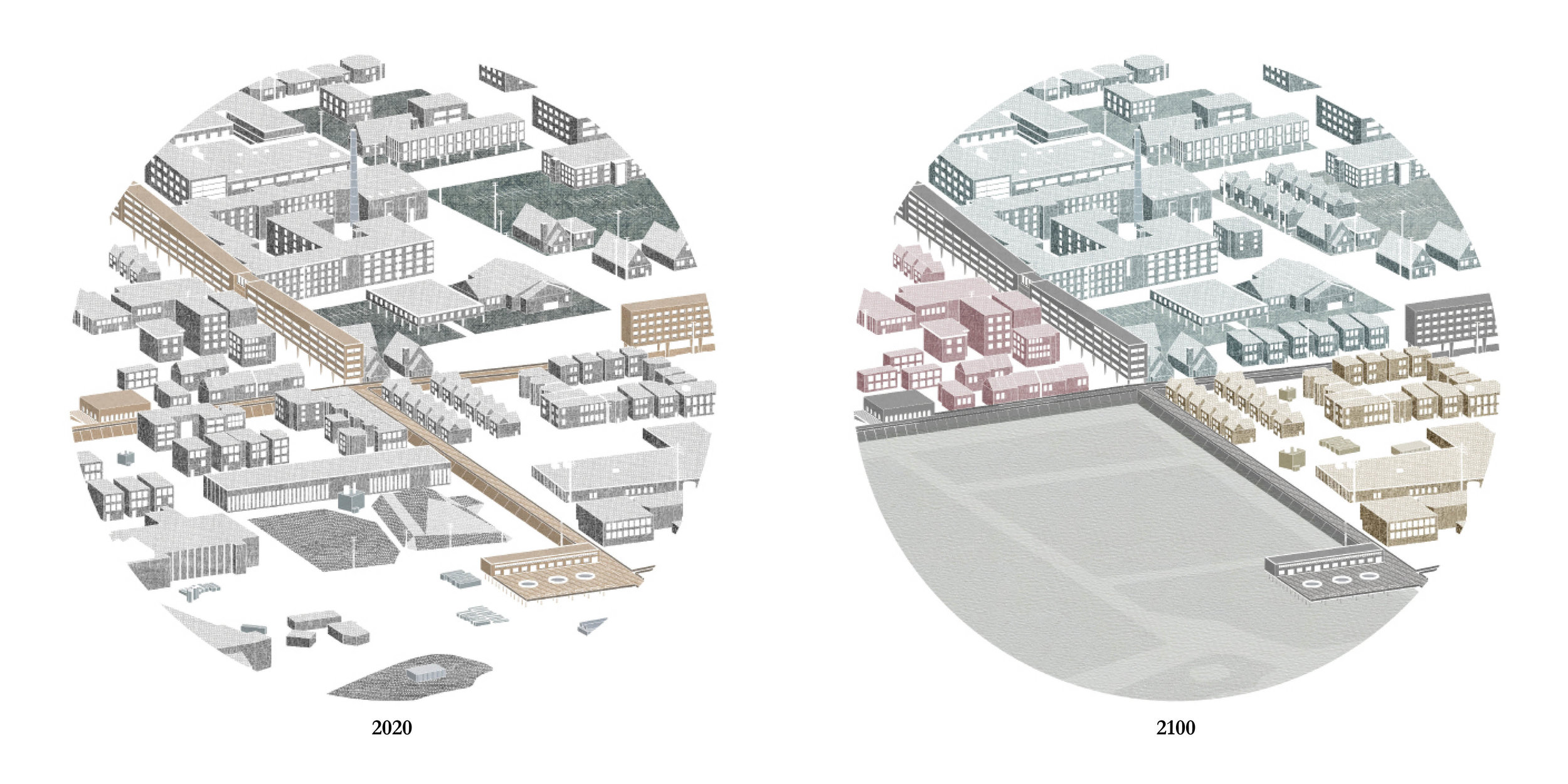
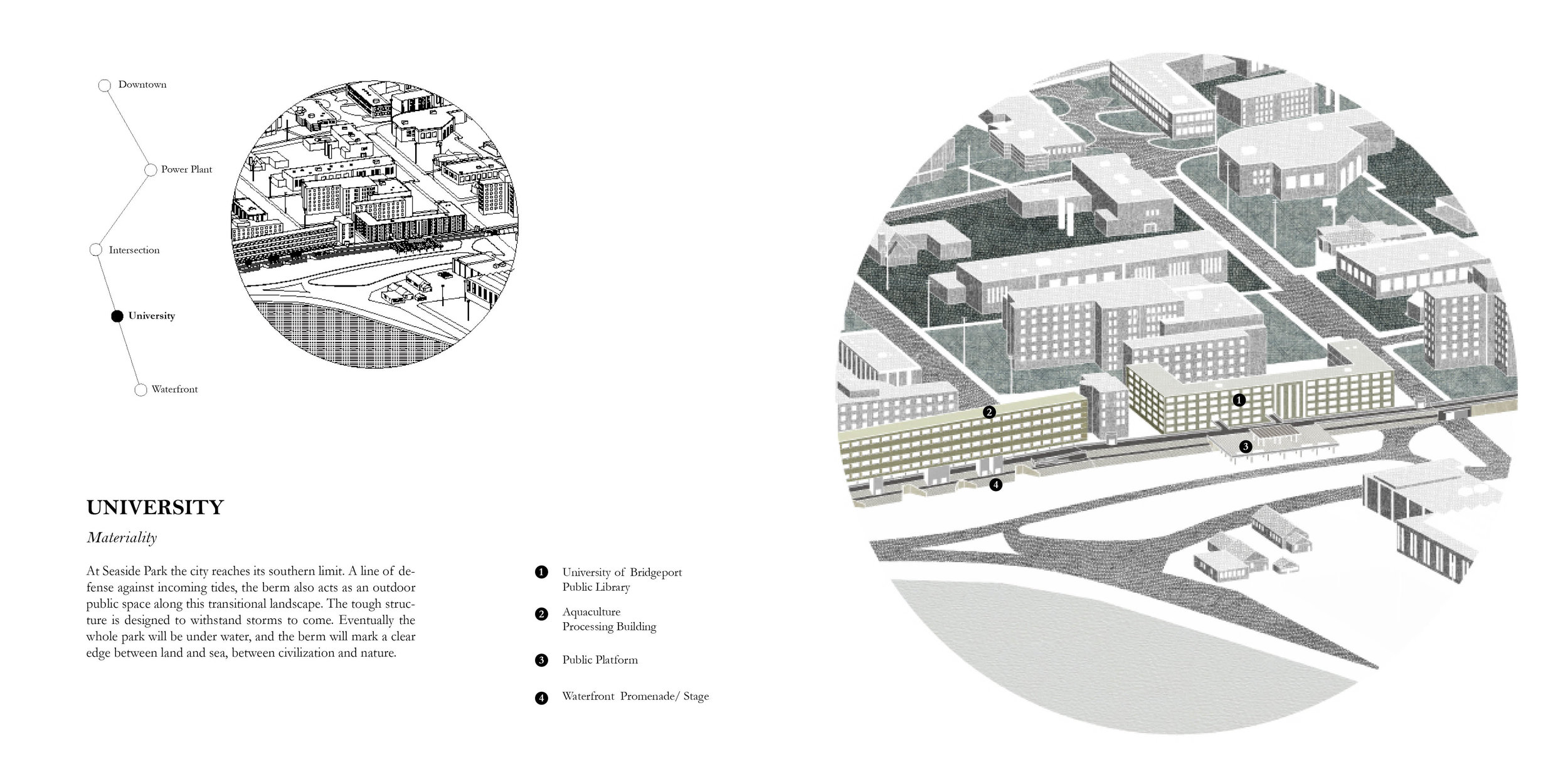
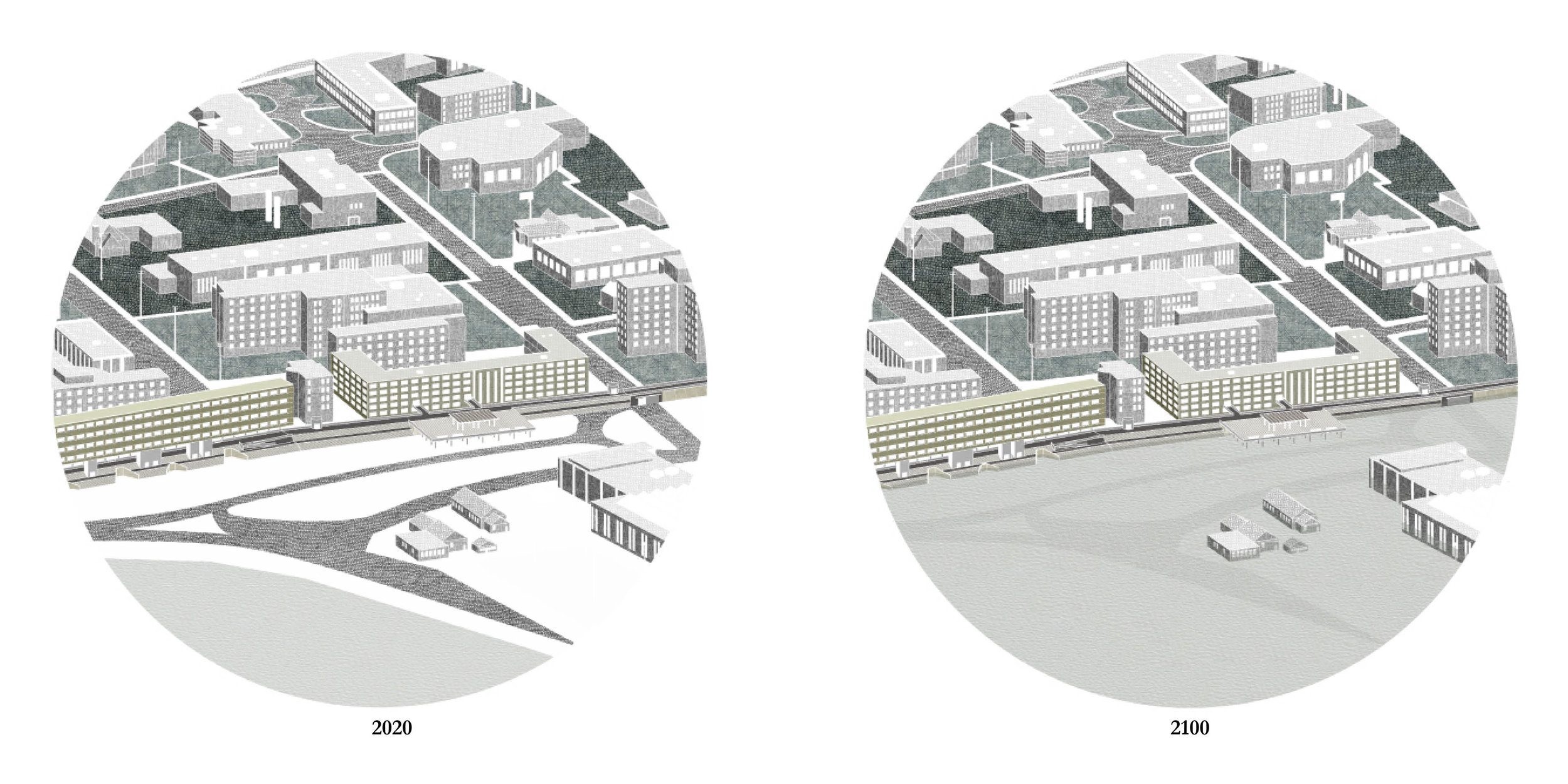
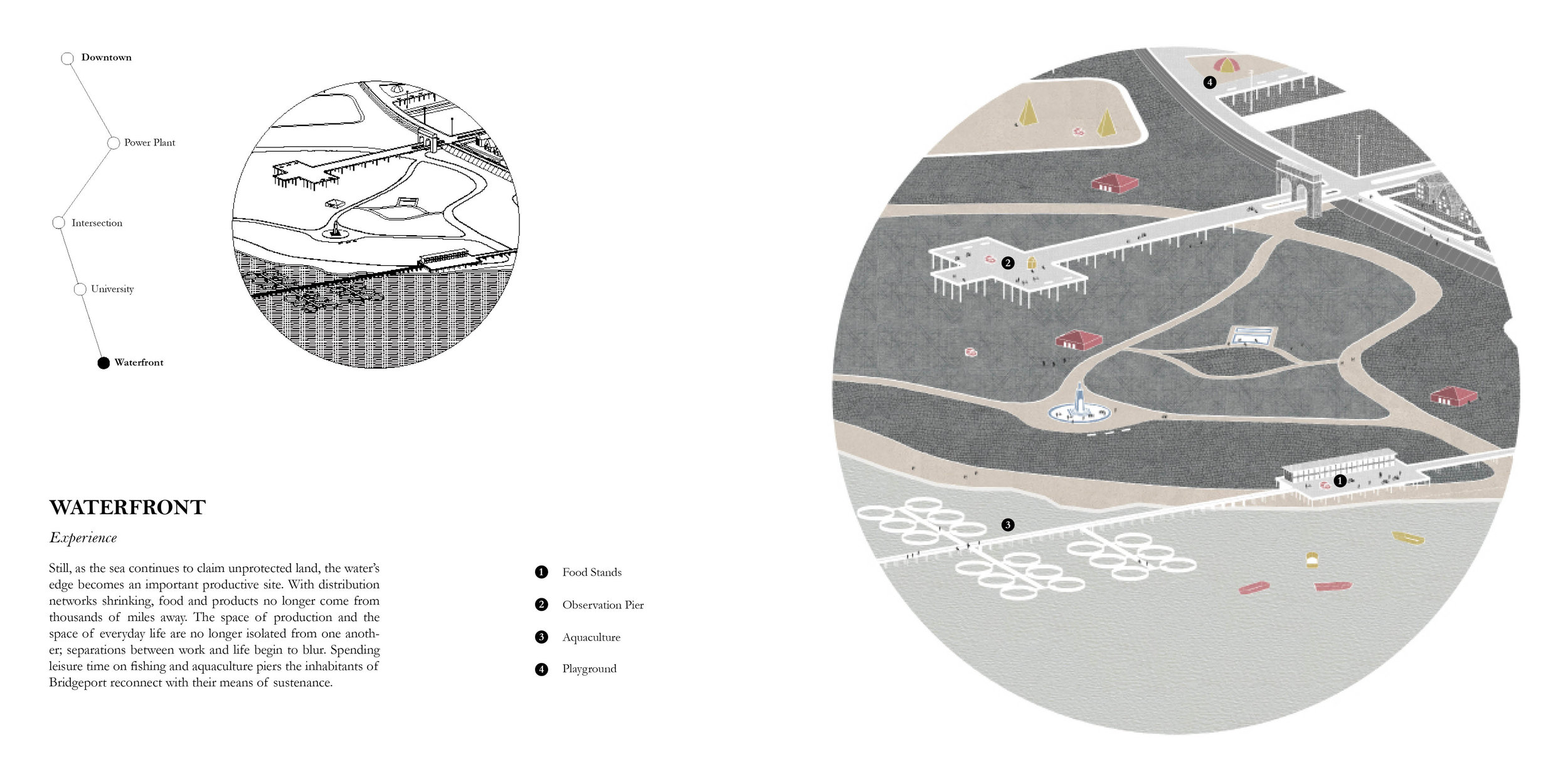
FRAMING TERRITORIES | For the Voluntary Refugees of Sea Level Rise
Under the current threat of global warming, sea level rise, and foreseeable shortages of natural resources, one might start thinking about the key elements that compose a city and how they need to be preserved. In response to Bridgeport’s actual urban predicament, epitomized by sprawls of vacant lots and abandoned buildings, the project develops a series of programmatic “rooms” delineated by infrastructural “frames” which resist or allow the water in. These walls are seen as spatial catalysts framing defined zones in order to control the potential degrowth of the area stretching from downtown to Seaside Park. Like Highway I-95, they are always twofold: they work as enclosures as well as connective elements. We believe that introducing new boundaries can revitalize some important areas that have sunken in the homogenous landscape of Bridgeport, and simultaneously connect different isolated zones of the city. Programmatically, the entire waterfront area is rehabilitated around new forms of local production, from aquaculture to greenhouses agriculture. Wetlands and dry terrains alternate in order to form a diverse landscape.
Bridgeport, Connecticut
Spring 2015 // Critic: Bimal Mendis,
In Collaboration with Luis Salas Porras
Project published in Retrospecta 38